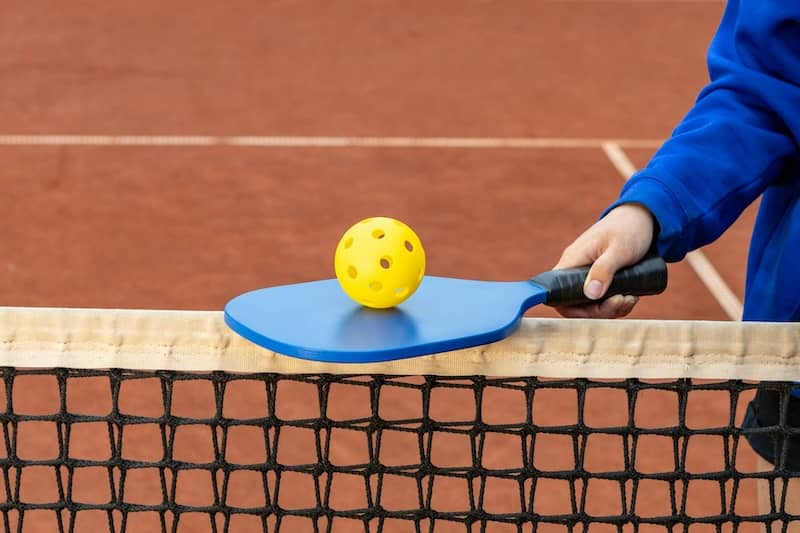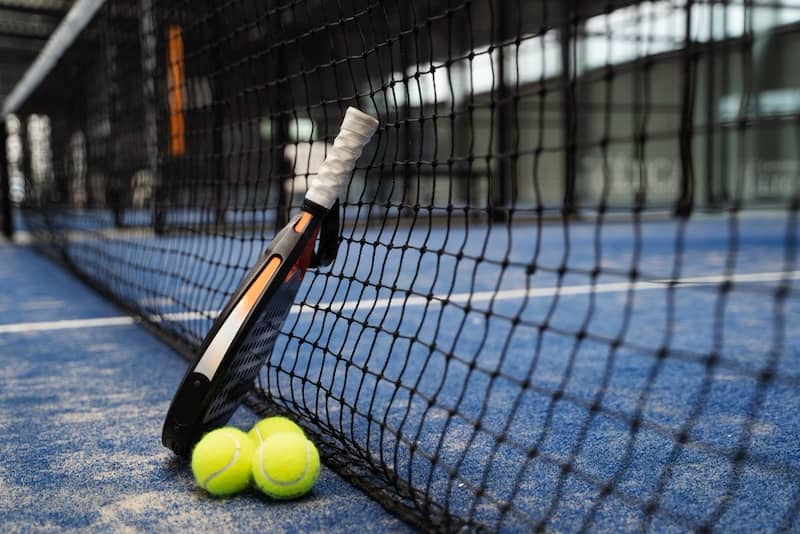Maybe you’ve played a few games of pickleball and fallen in love with the sport. Or perhaps you haven’t even hit the court yet but want to be prepared when you do. Either way, you’ll want the right gear for keeping up in the Kitchen and finessing a Flapjack.
The most critical piece of pickleball equipment is your paddle. With more than 20 companies making paddles and hundreds of models to choose from, you don’t lack choices. Finding the right racket can make a huge difference in your game, but how do you know what to look for and what a paddle’s specs will translate to in your gameplay? Here are some tips for choosing the best pickleball paddles for your playing style, ability level, and preferred strategies, and understanding what makes a good pickleball paddle.
There are five key elements to a pickleball paddle.
1. The Shape
According to official pickleball rules, the combined width and length of the paddle and any edge guards or butt cap can not be more than 24 inches. The paddle length is limited to 17 inches. Any paddle made by a reputable brand will be within these limits, but that still leaves plenty of room for variations in shape.
Every paddle has a “sweet spot” or an area where you will get the best shot. The shape of your paddle will affect the size and shape of the sweet spot, the power you can generate, the maneuverability of the paddle, and the finesse of your ball placement.
Classic Paddles
This paddle shape is the OG of pickleball paddles. Like the original paddles, a classic paddle is about 8 inches wide and 16 inches long. That provides a nice balance between power, forgiveness, maneuverability, and spin.
A classic-shaped paddle is a good beginner pickleball paddle as it does a little of everything. Once you’ve been playing for a while, you may want to focus on a particular component of your stroke or game. Until then, a classic shape will help you do a little of everything quite well.
Elongated Paddles
An elongated shape is usually about 7.5 inches wide and 16.5 inches long, making it longer than other sizes. This shape gives you expanded reach, which helps manage those shots that might be just out of range with a shorter racket. The longer body also gives you increased power and more ability to create spin on your shots. The trade-off is a smaller sweet spot and limited maneuverability compared to other shapes. That means elongated paddles tend to be better for more experienced picklers.
Widebody Paddles
With a broader face–around 8.5 inches–and slightly shorter length of about 15.5 inches, widebody paddles are shorter and fatter than classic and elongated shapes. That creates the largest sweet spot, meaning more of the shots you hit will likely go approximately where you want them. You sacrifice reach and power for that expanded sweet spot and paddle maneuverability. That means you may come up just short of getting a far-away shot, and you may not be able to hit powerful shots that overwhelm your opponent.
Because of the more prominent sweet spot, widebody paddles are a solid choice for newer players who don’t yet have the skill to consistently make contact with the ball in the center of the paddle.
2. The Weight
A lighter paddle is easier to swing, which can be an advantage if you are close to the net, making quick, precise shots. A heavier paddle generates more power without requiring an increase in your swing’s speed or length, which can be an advantage when hitting softer shots.
If you like your paddle but wish it had more weight, you can add lead tape to the edge guard, creating additional mass and power for your swing.
3. The Core
As a general rule of thumb, a thicker paddle core increases softness and control of your swing. A thinner core increases power and gives your pickleball paddle a more rigid feel as the ball leaves the face.
Polymer is the most popular core material and is found in the majority of paddles. It may be called polymer, polypropylene, poly, or something similar, but all those terms refer to the same material, which is a hard plastic.
The reason polymer is such a common core material is that it provides power and finesse. However, not all polymers are the same. Polymer is made up of tiny honeycomb-like cells. Higher-density polymers have smaller cells, meaning they have more material and less air. That creates a firmer feeling when you contact the ball and gives you more power than a less dense polymer.
4. The Facing or Surface Material
The materials of the facing, or surface material, of your paddle will also affect your gameplay. There are three common facing types:
Carbon Fiber
Carbon is the most common surface material, and for good reason. It is durable and stiff, which creates a larger sweet spot. That’s especially ideal for players still developing their aim and accuracy. It also has a nice feel when you hit the ball. Carbon pickleball paddles’ stiffness does mean slightly less power in your shots because the paddle absorbs more of the energy of the contact.
Fiberglass (also known as composite)
Fiberglass is less stiff than other options. It acts almost like a spring, flexing back against contact with the ball and then pushing that energy back into the return shot. It offers the most power of the three facing materials. The trade-off is a smaller sweet spot.
Graphite
Graphite paddles play similarly to carbon. Graphite paddles may be slightly less expensive, so if you want the best cheap pickleball paddles, head for the graphite options.
You may also see composite paddles with a mix of more than one facing material.
5. The Handle Length
You’ll find handles that vary from 4.5 to 6 inches. The longer your pickleball paddle’s handle, the more spin and power it can generate. But because regulation paddles are limited to 24 inches, the longer the handle, the less area your paddle’s hitting surface will have.
If you are starting your pickleball journey, borrowing rackets from other players and noting the specs of paddles you like or don’t like can help you narrow down what you want. If you are on the hunt for a new pickleball paddle, you can also read paddle reviews online or watch videos that review pickleball equipment. They will provide specific descriptions of each paddle’s pros and cons so you can find the paddle that works best for you.



